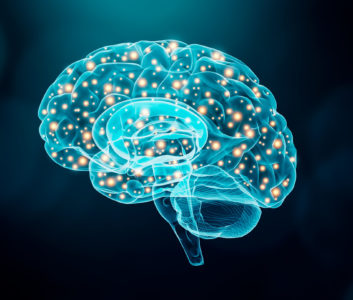 As we’ve talked about on the blog numerous times in the past, chronic pain can be an extremely frustrating condition, and that frustration only ratchets up another level when you feel like your needs are not being met by your pain care provider. The one person who should have your back during your battle with chronic pain is your doctor, so what should you do if you feel like you’re not being heard or your needs aren’t being met? We share some tips on what you should do in this situation.
As we’ve talked about on the blog numerous times in the past, chronic pain can be an extremely frustrating condition, and that frustration only ratchets up another level when you feel like your needs are not being met by your pain care provider. The one person who should have your back during your battle with chronic pain is your doctor, so what should you do if you feel like you’re not being heard or your needs aren’t being met? We share some tips on what you should do in this situation.
When You’re Not Being Heard By Your Pain Specialist
If you feel like your concerns simply aren’t being met by your pain care provider, take a deep breath and follow some of this advice.
1. Let Your Doctor Know – First and foremost, you’ll want to have a conversation with your doctor. There’s a very good chance that you and your doctor have different expectations or goals for your pain care, and oftentimes you can get on the same page with a simple conversation. When communicating with your doctor, be specific. Give examples of situations where you felt like you weren’t being heard or your needs weren’t met. We want this communication to be conversational, meaning that you want to talk and you also want to listen to what the other side has to say. You’d be amazed at how often care problems can be resolved with a constructive conversation.
2. Self-Evaluate – It’s also important that you take time to reflect on yourself and your situation to make sure that your frustrations are valid and directed in the right place. As we mentioned above, chronic pain can be extremely frustrating, and it’s not uncommon for patients to take that frustration out on their provider, despite the fact that their doctor is doing everything in their power to help them manage their condition. We’re not saying that your concerns aren’t valid, but self-evaluation is important in all walks of life, and it would be a shame for misplaced frustration to cause a rift between you and your care provider.
3. Ask For An Explanation – One thing many providers are guilty of is not deeply explaining the “why” behind their treatment recommendations. Whether it’s because they assume the patient has a better understanding of their condition and treatment than they do, or they simply focus on the end result and not the method itself, it’s easy for doctors to overlook important aspects of your care. Perhaps you feel like your concerns aren’t being met because you don’t understand why they are recommending the treatment they are, so please ask for clarification. We’d be more than happy to explain exactly why we believe our recommended treatment course is right for your specific situation.
4. Don’t Dwell On One Specific Instance – If you’re working to overcome a chronic pain condition, odds are you’ve visited your provider on a number of occasions. Many of those visits probably went fine, but it can be easy to really focus on one negative experience. Try not to let one bad interaction sour your experience with your doctor. We all have bad days and are juggling personal and professionally responsibilities, and we’d all like a do-over from time to time. Try to grant your provider some grace, but if the behavior becomes a pattern, move on to the last tip.
5. Find A New Provider – Finally, if you’ve tried all of the above and still feel like your doctor isn’t the right provider for you, it’s time to look elsewhere for care. We know that switching providers can be a headache, but it will be worth it to connect with a professional who truly puts your needs first. We’d love to be that provider for you, so if you want to connect with a doctor who will make sure your concerns are always heard, reach out to Dr. Cohn and his team today at (952) 738-4580.
 Early intervention is key for almost all medical conditions, but it’s even more important for certain issues. While cancer may be the most obvious condition that benefits from early treatment, so too does chronic pain. In today’s blog, we explain why early treatment can be so beneficial for patients dealing with chronic pain.
Early intervention is key for almost all medical conditions, but it’s even more important for certain issues. While cancer may be the most obvious condition that benefits from early treatment, so too does chronic pain. In today’s blog, we explain why early treatment can be so beneficial for patients dealing with chronic pain. The Fourth of July is only a few days away, and that means many people will soon be celebrating the holiday near one of Minnesota’s more than 10,000 lakes. Spending time by the water can be a great way to enjoy summer, but the lake can also cause issues if you’re dealing with an underlying chronic pain condition. We don’t want a chronic pain condition to cause problems for your Fourth of July holiday, so in today’s blog, we’re going to share some tips for managing your chronic pain condition if you’ll be on the lake this weekend.
The Fourth of July is only a few days away, and that means many people will soon be celebrating the holiday near one of Minnesota’s more than 10,000 lakes. Spending time by the water can be a great way to enjoy summer, but the lake can also cause issues if you’re dealing with an underlying chronic pain condition. We don’t want a chronic pain condition to cause problems for your Fourth of July holiday, so in today’s blog, we’re going to share some tips for managing your chronic pain condition if you’ll be on the lake this weekend. Chronic pain is one of the most common reasons why people visit a doctor’s office, but because of the highly individualized nature of chronic pain, figuring out a diagnosis and effective treatment plan isn’t always easy. It’s tough to really get inside the brain of a person who is battling a chronic pain condition, but that’s exactly what researchers tried to do with this most recent study.
Chronic pain is one of the most common reasons why people visit a doctor’s office, but because of the highly individualized nature of chronic pain, figuring out a diagnosis and effective treatment plan isn’t always easy. It’s tough to really get inside the brain of a person who is battling a chronic pain condition, but that’s exactly what researchers tried to do with this most recent study. A recent study suggests that listening to music could be a complementary alternative to medication for treating some forms of chronic pain. And while throwing on a pair of headphones is unlikely to fully resolve your chronic pain, it does give hope that alternative treatments could prove beneficial when opioids aren’t yielding the necessary results.
A recent study suggests that listening to music could be a complementary alternative to medication for treating some forms of chronic pain. And while throwing on a pair of headphones is unlikely to fully resolve your chronic pain, it does give hope that alternative treatments could prove beneficial when opioids aren’t yielding the necessary results.